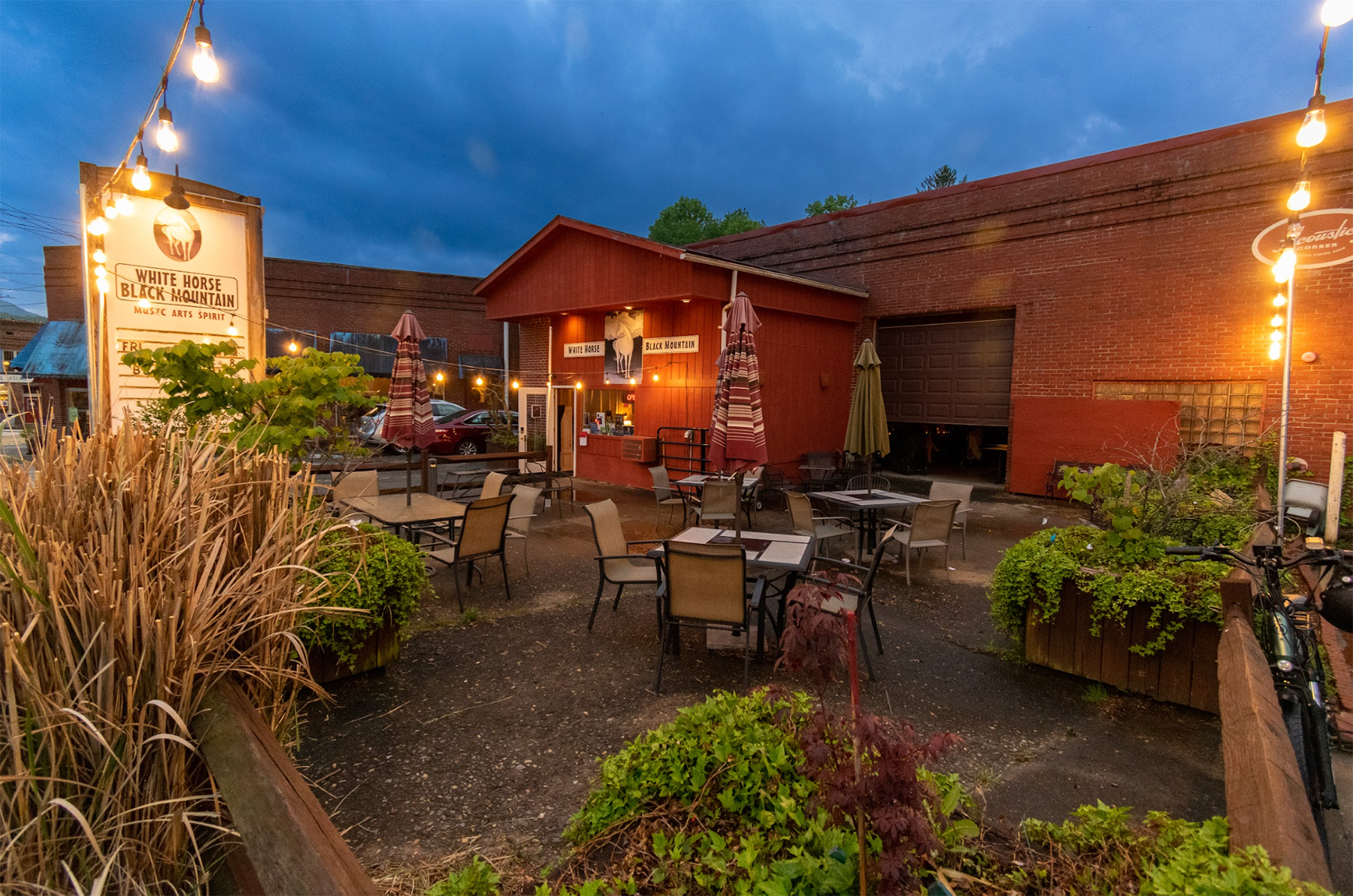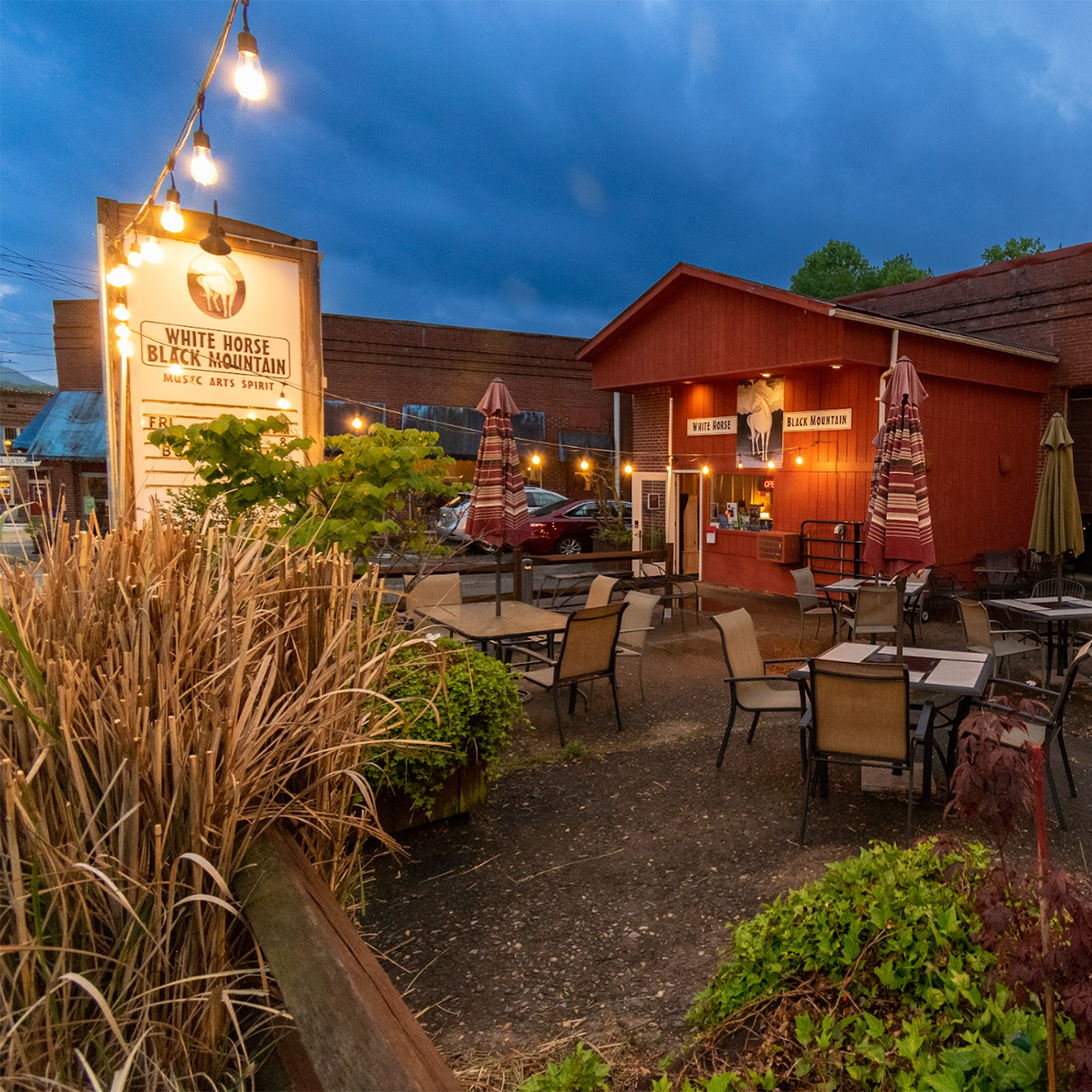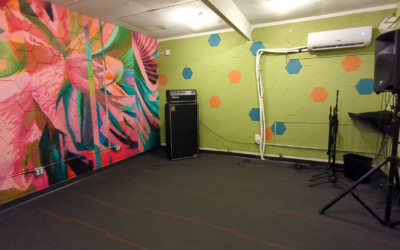

Black Mountain’s Collaborative Creatives
In the town of Black Mountain, arts organizations are innovating to ensure sustainability and cooperation over scarcity and competition
April 15, 2024 | As part of our continuing series profiling pioneering creative spaces and the challenges faced by artists in Asheville and Buncombe County, we are highlighting Black Mountain. Located east of Asheville, Black Mountain is home to just over 8,000 residents, and is a top travel destination in Western North Carolina.
The area’s connection to the arts runs deep, most notably through the historic Black Mountain College, an avant-garde, experimental school open from 1933-1957 that hosted luminaries like Josef and Annie Albers, John Cage, Ruth Asawa, Merce Cunningham, M.C. Richards, and many others.
That legacy, as well as a vibrant population of local artists and makers, has drawn people to the town for decades. Like Asheville, the scarcity of affordable housing and business space has challenged creatives trying to live and work in the area. In March of 2024, the median home price was $565,000 – higher than Asheville’s $508,890 at the same time, according to Movoto. Black Mountain’s property inventory is also smaller.
The demand for real estate and high rent prices can be a significant roadblock for arts organizations. The Swannanoa Valley Art League, which rented space for years at the Monte Vista Hotel for their Red House Gallery and Studios, has recently moved into a storefront at 101 Cherry St. after a Florida developer purchased the hotel with the intention to use it for other purposes.
While affordability is a top-cited concern for artists living and working in town, Black Mountain’s tight-knit creative community has leveraged their connections to support the arts, working together and innovating to rise to challenges. While some organizations, like music venue White Horse Black Mountain, have been longtime anchors of the arts community, others, like North Carolina Glass Center, which will open its new facility in August or September, are bringing new energy to the local art scene, along with excitement about collaborative possibilities.
Local glass heats up
North Carolina Glass Center will open its second location – and its first in Black Mountain – this fall. Executive Director Candace Reilly notes that the organization’s needs have eclipsed space at the original facility in the River Arts District (140c Roberts St.).
“After the pandemic, we saw an uptick of glass artists that needed to use our resources,” says Reilly. Those resources include studio rentals and access to the hot shop, flame shop, and cold shop. Demand also increased for public classes, professional development, and advanced education.
Conversations about a second space began in 2021. A generous donor purchased the Black Mountain building for the organization, and will help to fund that location as the primary education center. “It will help us fulfill our mission to the best of our ability,” says Reilly.
The location will offer weekend-long workshops, more space for artists, residencies, outreach programs, demos, and more public classes. It will also likely be where the Glass Center hosts most of their speakers, receptions, lectures, and other special events. It has four glory holes to the RAD’s two, allowing for more programming and rentals.
Buying in Black Mountain was “more affordable” than Asheville, shares Reilly. “We’d looked all over the Asheville area, and there was nothing available – and if it was, it was out of everyone’s price range or wouldn’t have been good for glass art.” She notes that Black Mountain’s affordability challenges shouldn’t be glossed over. “It’s a small community, but it’s also an expensive one,” she says. “And there are outside developers coming in and making it more expensive.”
She shares that she and her staff have loved getting to know the community. “It has its own tourist economy that is totally separate from Asheville in a lot of ways,” she says. “There are also glass artists in Marion and Old Fort looking forward to having a closer facility to go to.” The proximity to the VA Hospital and Swannanoa will also create more opportunities for veteran and rural youth programs, outside of Asheville city limits.
When the Glass Center opens, there will be a total of four arts nonprofits in Black Mountain (the other three are White Horse Black Mountain, Black Mountain Center for the Arts, and the Swannanoa Valley Art League. “We’re planning a conglomerate to support each other, cross market, and come up with programming,” she says. “It’s really exciting. There are lots of new pathways to travel and new relationships to build.”
White Horse Black Mountain’s community-driven vision
To create more of those pathways to sustainability, one organization – White Horse Black Mountain – became a nonprofit in April 2023. Last September, they also purchased the building they have occupied for 15 years with the help of several anonymous donors, a critical step that allowed them to remain open after the building’s owner told them it would be put up for sale. “The real estate market in Black Mountain for homes and commercial developments is fiercely competitive, but the people make a difference,” says Selena Hilemon, White Horse Black Mountain’s Membership and Communications Director.
Hilemon recognizes how rare it is for an arts organization to own its building, but also notes that the shift has come with its own set of challenges. White Horse is currently closed for Phase One of renovations to that building at 105 Montreat Rd., which include a new roof, air conditioning, and renovations to “meet and exceed” ADA compliance. The seating capacity will also increase by about 60%. Renovations should be complete by the end of May.
Becoming a nonprofit has also allowed White Horse to start a membership program. Starting at $20 a month, memberships are another way that the organization can cover costs, and members receive perks including free tickets, discount codes, and a monthly concert that includes dinner. Hilemon stresses that no one needs to be a member to attend a show.
The membership program supports White Horse on their pathway to sustainability, and it allows the organization to come closer to founder and current Musical Director Bob Hinkle’s original vision. “Our ultimate goal is to become “an income-generating nonprofit that recycles those funds back to other community nonprofits,” says Hilemon. Once the mortgage is paid off, White Horse plans to become a granting organization. “The more memberships we get, the more sustainable we become,” she explains, “and the more we can redirect funds into community partnerships. The further you get from scarcity finances, the more you can broaden the range of art and artists you support. We get to take more changes and bring in folks who might not otherwise get heard on a stage. Having no margin for failure means that nonprofits stay really small. When artists have no room for a loss, it keeps them limited.”
Ultimately, she says, “people need spaces to bloom.”
The town itself has become this kind of incubator as well. “Seeing community support around arts spaces in the last year, including how Town Council and the Chamber of Commerce have rallied around these spaces, has created excitement and energy around how we can help one another and make this a less competitive and more supportive space,” Hilemon says.
Town support includes socials hosted by the Chamber that bring business owners and nonprofits together to get to know one another. White Horse also regularly meets with people in the local hospitality industry to see how they can support each other. An updated Chamber list of local businesses also sparked a bimonthly working group where members discuss how upcoming events could be paired with local lodging.
Also in the works for White Horse? Black Mountain Blues, an event partnership with LEAF Global Arts, which has hosted their flagship festival on the grounds of Black Mountain College for 28 years. The blues fest, scheduled for July 12-14, will bring thousands of people to town for “an experience that speaks directly to the history and roots of the blues, which is the source of so many of our musical traditions, especially in Western North Carolina” Hilemon says. The experience is designed to be walkable, with vendor stations placed between stages. Artists and ticket information will be announced soon.
“Everyone is affected by these festivals, and everyone is getting on board to support their development,” says Hilemon. “There’s a community spirit around these events,” Hilemon continues. “People ask, ‘How can we pitch in?’”
Stay tuned for more profiles of creative spaces, and for ArtsAVL’s Creative Spaces Report, which will assess the local creative landscape to provide crucial information for understanding the current reality and possible paths forward for the creative community. Visit artsavl.org/spaces for project updates and register for the upcoming Town Hall (May 10).
Related Articles
RadHaus Studios Brings Affordability and Aesthetics to Rehearsing and Recording
Rock Pyle rehearsal space, mural by Kathryn Crawford | Courtesy of RadHaus Studios RadHaus Studios...
Asheville Community Theatre Opens Up to Possibility
Photo of Partially Completed Renovation, Courtesy of Asheville Community Theatre Asheville...
The River Arts District Reckons with Sustainability
Photo courtesy of River Arts District Artists The River Arts District Reckons with Sustainability...



